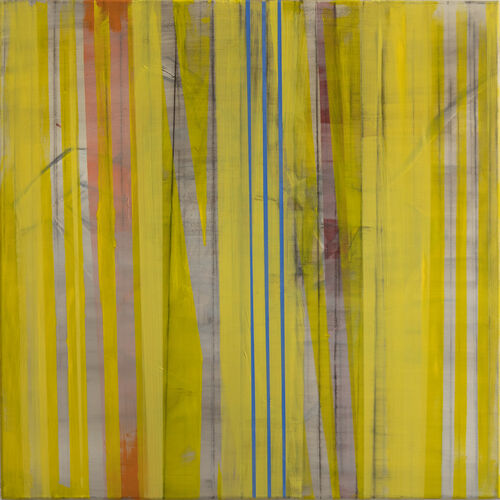Andreas Maus reaches into the shelf and pulls out a black book. His Anne Frank book. He opens it and describes the motifs of his paintings. »And now here are all the torture scenes from the Third Reich,« he says. Maus prefers to deal with the Second World War in his paintings. He paints the scenes with coloured ballpoint pens. He scribbles, strokes, lines up squiggles. His aesthetic is always the same: Eine brennende Frau im Bombenhagel auf Deutschland 1940 (Engl. A Woman on Fire in the Bombing of Germany 1940) shows an unclothed female figure in dashed green and black flames. Her eyes are red, her mouth open in a scream. She raises her arms in the air. She has no hair. The background is composed of red circles, blue bombs are falling from the sky. Maus unmistakably places the inscription above it: »The bombing war did not spare the civilian population in Germany either. 1940-1945.«
It is a scene from the introduction video of the artist Andreas Maus on the euward website; an art prize that is special in its field: It is the »European Art Award for Painting and Graphic Arts in the Context of Mental Disability«. Maus took first place in 2021.



















